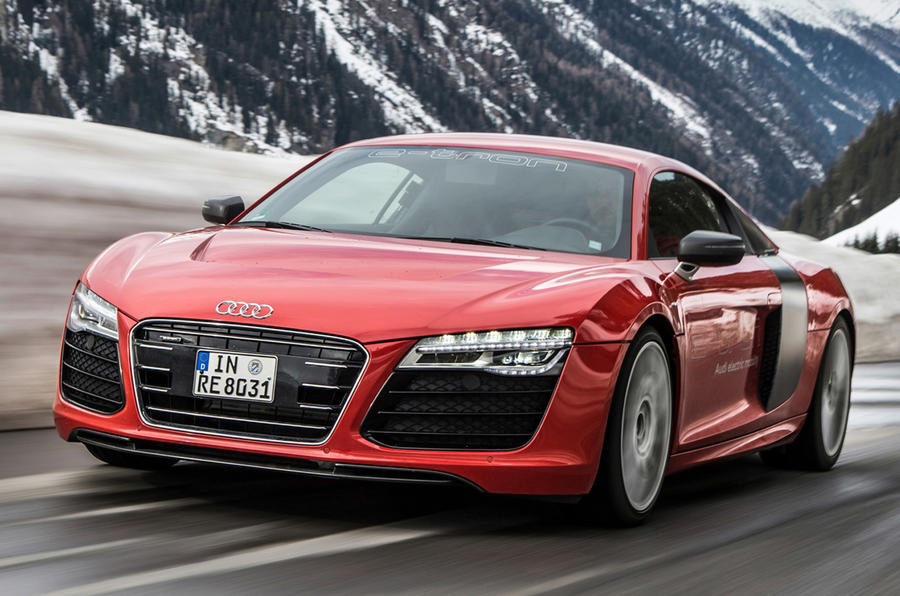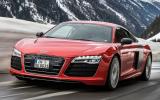A lot has changed since we last tested Audi’s all-electric sports car, the e-tron.
Back in 2010 it was a four-wheel-drive, four-motor prototype that was destined for 1000-car per year production. It was set to receive distinct styling, its own spaceframe, a unique interior, a 1600kg kerb weight and due to be sold at “above Audi R8” prices.
Now it’s a two-motor, rear-wheel-drive, 1780kg coupé prototype that’s based on the facelifted Audi R8. Audi has developed and built 10 cars to a production standard, each valued at over £850,000, in a short space of time to demonstrate the technology and continue trials.
Opting for a rear-drive layout, instead of the quattro system found in normal Audi R8s, may seem a somewhat counterintuitive move. Audi says, however, that the e-tron's rear-drive layout offers adequate traction, negating the need for four-wheel drive, and a more engaging driving experience. There would also be considerable packaging, weight and technical challenges to overcome using a quattro configuration.
The R8’s high-performance electric motors draw current from a 48.6kWh lithium-ion battery, the bulk of which sits behind the driver. Combined, the motors deliver 375.5bhp and 604.8lb ft. This allows the R8 e-tron to dispatch the 0-62mph sprint in 4.2sec and reach a limited top speed of 124.27mph. Derestricted it could reach over 155mph, at the cost of efficiency.

























































